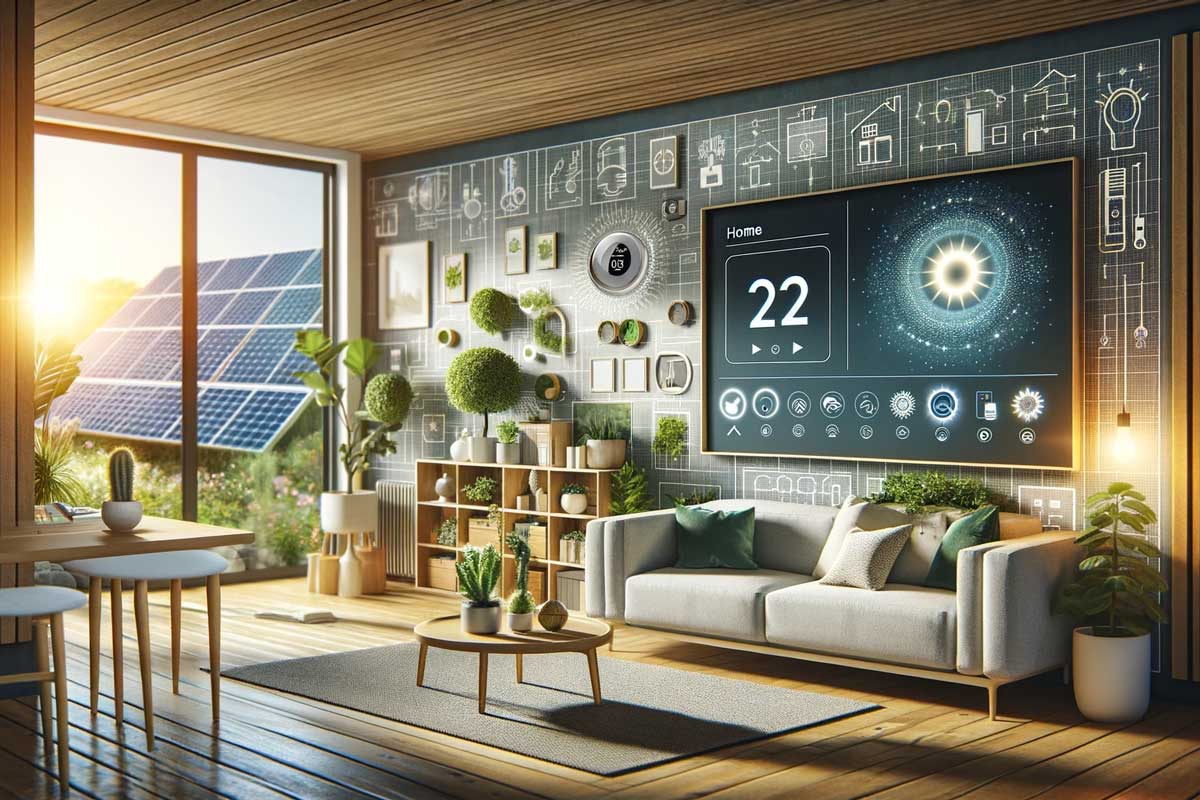
How to optimize heating with smart devices: A guide for tech enthusiasts
Share
In today's fast-paced world, where technology intertwines with every aspect of our lives, understanding how to optimize heating with smart devices is becoming increasingly crucial. The integration of smart technology in heating systems not only enhances comfort but also significantly boosts energy efficiency, making it a hot topic among tech professionals and enthusiasts alike.
As we delve into the nuances of smart heating, we'll explore the ways these advanced systems can be leveraged to create a more sustainable and efficient home environment. Not only do smart devices offer convenience, but they also provide an opportunity to contribute positively to our planet by reducing energy consumption.

Understanding Smart Heating Systems
At the heart of smart heating systems are IoT-enabled devices that allow for remote control and automation of your home's heating settings. From smart thermostats to interconnected radiators, these devices can learn your preferences, adjust settings automatically, and even predict your heating needs based on past behaviors.
For tech professionals, the allure of smart heating lies in its ability to seamlessly merge with other eco-friendly technologies, creating a holistic smart home ecosystem. By optimizing these systems, not only can you enhance your home's comfort level, but you can also significantly reduce your energy bills.
The Benefits of Optimizing Heating with Smart Devices
One of the primary benefits of optimizing heating through smart devices is the potential for energy savings. Smart thermostats, for instance, can learn your schedule and adjust the temperature accordingly, ensuring that energy isn't wasted on heating an empty home.
Moreover, the ability to control your heating remotely provides unparalleled convenience. Whether you're returning from a long trip or simply want to ensure your home is warm upon arrival, smart devices offer the flexibility to adjust settings from anywhere, at any time.
Another critical advantage is the positive impact on the environment. By using only the energy you need, when you need it, smart devices help reduce your overall carbon footprint. For those interested in sustainable living, integrating smart heating is a step towards a greener future.
Steps to Optimize Your Smart Heating System
1. Choose the Right Smart Thermostat
Selecting a smart thermostat that suits your needs is the first step towards optimization. Look for models that offer features like learning algorithms, energy usage reports, and voice control compatibility. Brands like Nest, Ecobee, and Honeywell are popular choices among tech enthusiasts.
2. Implement Zoning for Greater Control
Zoning allows you to heat different areas of your home independently. By using smart sensors and thermostats in each zone, you can ensure that you're not wasting energy on spaces that aren't in use. This not only improves comfort but also enhances overall energy efficiency.
3. Integrate with Other Smart Home Devices
For a truly optimized system, integrate your heating with other smart home devices. By creating a synchronized ecosystem, you can automate routines that adjust your heating alongside lighting, security, and cooling systems. This interconnectedness offers complete control over your home's environment.
4. Monitor Energy Usage
Regularly reviewing energy usage reports provided by your smart thermostat can offer insights into your consumption patterns. Use this data to make informed decisions about adjusting your settings, thereby maximizing efficiency and minimizing waste.
Challenges and Considerations
While the benefits are clear, optimizing heating with smart devices does present some challenges. One significant concern is the initial investment cost. Smart devices can be expensive, but the long-term savings on energy bills often offset this cost.
Additionally, the complexity of installation and setup may be daunting for some. However, for tech professionals and enthusiasts, this challenge is often seen as an exciting opportunity to tinker and innovate.
Security is another consideration. As with any connected device, ensuring that your smart heating system is protected against cyber threats is crucial. Regularly updating software and using secure networks can help mitigate these risks.
The Future of Smart Heating
As technology continues to evolve, the future of smart heating looks promising. Innovations such as AI-driven predictive analytics and integration with renewable energy sources are on the horizon, offering even greater potential for efficiency and sustainability.
For tech professionals, staying abreast of these developments is essential. Participating in forums or reading up on the latest trends, such as those discussed in sustainable home designs, can provide valuable insights into future advancements.
Conclusion
Optimizing heating with smart devices is more than just a trend; it's a transformative approach to managing energy consumption and enhancing home comfort. For tech enthusiasts, the journey towards a fully automated, efficient home is an exciting venture filled with opportunities for innovation.
By embracing smart heating technologies, we not only improve our living conditions but also contribute to a more sustainable world. As you explore the possibilities, remember that the key to optimization lies in understanding your needs, experimenting with settings, and continuously seeking out new advancements.

FAQ
1. How do smart thermostats save energy?
Smart thermostats save energy by learning your schedule and adjusting the temperature accordingly, ensuring minimal energy wastage.
2. Are smart heating systems secure?
Yes, smart heating systems are secure if you follow best practices, such as using secure networks and regularly updating your device software.
3. Can smart devices be integrated with renewable energy sources?
Yes, many smart devices can be integrated with renewable energy sources, providing a sustainable and efficient energy solution for your home.
